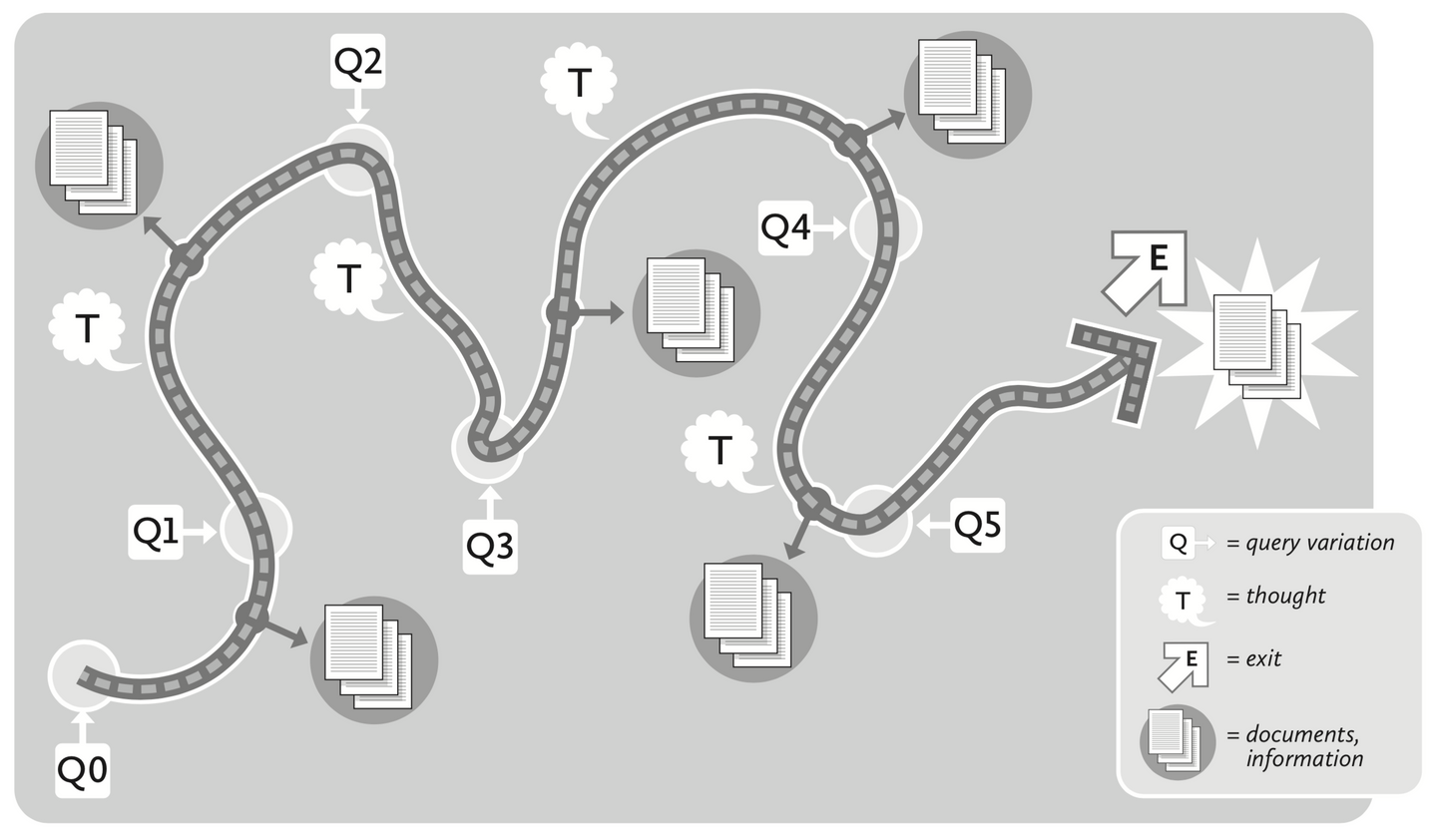The literature on browsing develops a portrait of a complex, open-ended, embodied human experience, rather than the input-output exchange that characterises traditional information retrieval.
(...)
Browsing is an iterative process that entails scanning or glimpsing a field of potential resources, and selecting or sampling items for further investigation and evaluation.
(...)
Browsing entails movement through a field of resources; Kwasnik stipulates "movement in a connected space". This movement depends in turn on orientation: a knowledge of the "structure and content" of the browsing field
(...)
We may browse with or without a goal in mind, and goals may change as the process unfolds.
- touching on Embodied Cognition is interesting, browsing happens with the body, in a space
- browsing is open-ended compared to information retrieval

(source: "The design of browsing and berrypicking techniques for the online search interface")
One problem with the original UI to Archivist is that there's no way to see everything, all at once. I can either scroll and see a couple of images at the same time, or remember the right phrase to search for — this is the main difference of Browsing vs Searching.
During the summer of 2020 I played around with an idea for research-focused web browser, embodying some of the concepts from Browsing vs Searching note — browsing being an open-ended divergent activity, and searching understood as information retrieval.
- currently UIs require users to "play every chord", while "improvisation" would be like a conversation, similarly to how the open-ended "browsing" works like
- history could be Browsable and Searchable
- exploring links is related to Browsing vs Searching
- this rules are very relevant to both Browsing, and Searching